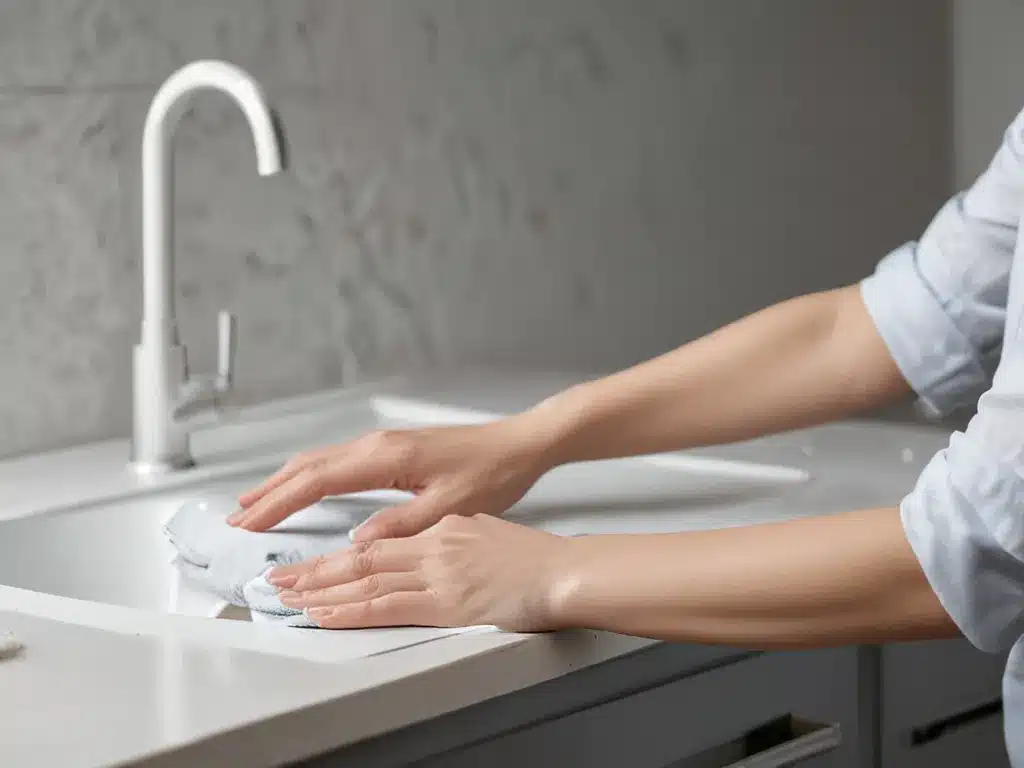Introduction
When it comes to cleaning, not all surfaces are created equal. Some materials and finishes require gentle care and sensitive methods to keep them looking their best without causing damage. As someone who values my belongings and wants them to last, I’ve learned the proper techniques for keeping my more delicate items clean. In this article, I’ll share what I’ve discovered about caring for fragile surfaces throughout my home so you can keep your cherished items sparkling too.
Identifying Delicate Surfaces
The first step is recognizing which household surfaces require a soft touch. Here are some common delicate materials I often encounter:
- Wood furniture: Both finished and unfinished wood can be damaged by harsh cleaners. The same goes for other wooden surfaces like hardwood floors.
- Leather: From leather couches to leather-bound books, leather is prone to drying out and cracking if not cleaned properly.
- Marble: While marble countertops add elegance, they etched by acidic cleaners. Other natural stone surfaces like granite and limestone are also vulnerable.
- Metals: Sterling silver, brass, and other soft metals will tarnish or wear down with abrasive scrubbing.
- Paintings and artwork: Oil paintings and other artwork can be irreparably damaged by liquid cleaners.
- Electronics: Screens and other surfaces on phones, tablets, TVs, and computers are very prone to scratches.
Paying attention to furniture tags, material labels, or service manuals can help identify cleaning dos and don’ts. When in doubt, it’s best to err on the gentle side.
Cleaning Strategies for Delicate Surfaces
Now let’s explore some smart cleaning techniques to safely care for fragile household items:
1. Use Gentle Cleaning Solutions
Harsh cleaners that contain acids, alkalis, salts, strong solvents or abrasives should always be avoided. Here are some gentler cleaning solutions I rely on instead:
- Water
- Mild soap
- Olive oil or coconut oil
- Diluted vinegar or lemon juice (for stone and metals)
- Gentle commercial cleaners labeled “sensitive” or “delicates”
It’s always wise to first test cleaners in an inconspicuous area to check for any damage or discoloration.
2. Use Soft Materials and Avoid Excess Moisture
Avoid abrasive sponges, stiff brushes or anything that could scratch. Instead, clean delicate surfaces using:
- Microfiber cloths
- Soft cotton cloths
- Feather dusters
- Soft-bristle brushes
Wring cloths thoroughly before wiping to prevent excess water from damaging surfaces.
3. Dust Frequently
Dusting often with a feather duster is an effective way to maintain many delicate surfaces. This removes dust and debris before it has a chance to build up and require more rigorous cleaning.
For items like leather furniture and artwork, I dust at least once a week to keep them looking their best.
4. Clean in Sections and Rinse
When wiping down larger areas, work in small sections and rinse cleaning cloths frequently to prevent grease and dirt buildup. I’ve learned from experience that scrubbing too vigorously over large surface areas can lead to scratches and other damage. Gentle cleaning in sections is safer.
5. Follow the Grain
When wiping wood furniture, follow the direction of the grain – never scrub across the grain. This prevents the wood’s finish from getting damaged. I use the same tip when mopping wood floors.
6. Get Help for Specialized Cleaning
For very expensive or highly fragile items, it’s sometimes wise to let professionals handle specialized cleaning. This includes antique furniture restoration, art conservation, jewelry cleaning, electronics servicing and more. The small investment helps ensure precious items get the most appropriate care.
Conclusion
Caring for household surfaces too aggressively can lead to permanent damage. But by using mild cleaning solutions, soft materials and gentle techniques, it’s possible to keep even the most delicate finishes spotless. With the right sensitive approach to cleaning, I’ve been able to maintain the beauty of my most cherished possessions for years to come.







